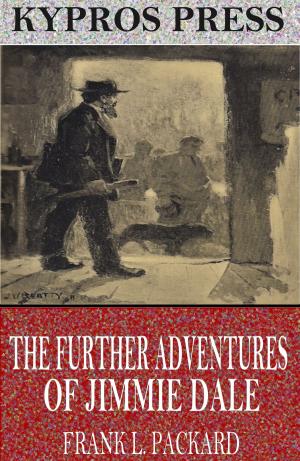Battles and Leaders of the Civil War: The Cavalry Battle near Gettysburg (Illustrated)
Nonfiction, History, Americas, United States, Civil War Period (1850-1877), Military, 19th Century| Author: | William E. Miller | ISBN: | 9781619829022 |
| Publisher: | Charles River Editors | Publication: | January 18, 2012 |
| Imprint: | Language: | English |
| Author: | William E. Miller |
| ISBN: | 9781619829022 |
| Publisher: | Charles River Editors |
| Publication: | January 18, 2012 |
| Imprint: | |
| Language: | English |
Without question, the most famous battle of the Civil War took place outside of the small town of Gettysburg from July 1-3, 1863. Over those three days, nearly 8,000 would die, over 30,000 would be casualties, and the most famous attack of the war, Picketts Charge, would fail Robert E. Lees Army of Northern Virginia. The South would go on to lose the war, and when it did, the importance of Gettysburg as one of the high tide marks of the Confederacy became apparent, making the battle all the more important. Former Confederate comrades like James Longstreet and Jubal Early would go on to argue who was responsible for the loss at Gettysburg in the following decades. The Confederate cavalry played an especially controversial role during the campaign. Given great discretion in his cavalry operations before the battle, JEB Stuarts cavalry was too far removed from the Army of Northern Virginia to warn Lee of the Army of the Potomacs movements. Lees army inadvertently stumbled into the Union army at Gettysburg, walking blindly into what became the largest battle of the war. Stuart has been heavily criticized ever since, and it is said Lee took him to task when he arrived on the second day, leading Stuart to offer his resignation. Lee didnt accept it, but he would later note in his after battle report that the cavalry had not updated him as to the Army of the Potomacs movements. Given the intense focus on Picketts Charge, the cavalry actions of Day 3 often go unnoticed, most notably the fighting in East Cavalry Field. The vaunted J.E.B. Stuart attempted to drive his cavalry into the Army of the Potomacs supply lines in its rear while the Army of Northern Virginia prepared for Picketts Charge. At East Cavalry Field, however, the Union cavalry fought the Confederate cavalry to a standstill, with George Custers brigade bearing the brunt of the casualties. William E. Miller, captain of the 3d Pennsylvania Cavalry, went on to write an article about the cavalry fighting that was eventually published in the famous Battles & Leaders series. This edition of Battles & Leaders of the Civil War: The Cavalry Battle near Gettysburg is specially formatted with a Table of Contents and pictures of Gettysburgs important commanders.
Without question, the most famous battle of the Civil War took place outside of the small town of Gettysburg from July 1-3, 1863. Over those three days, nearly 8,000 would die, over 30,000 would be casualties, and the most famous attack of the war, Picketts Charge, would fail Robert E. Lees Army of Northern Virginia. The South would go on to lose the war, and when it did, the importance of Gettysburg as one of the high tide marks of the Confederacy became apparent, making the battle all the more important. Former Confederate comrades like James Longstreet and Jubal Early would go on to argue who was responsible for the loss at Gettysburg in the following decades. The Confederate cavalry played an especially controversial role during the campaign. Given great discretion in his cavalry operations before the battle, JEB Stuarts cavalry was too far removed from the Army of Northern Virginia to warn Lee of the Army of the Potomacs movements. Lees army inadvertently stumbled into the Union army at Gettysburg, walking blindly into what became the largest battle of the war. Stuart has been heavily criticized ever since, and it is said Lee took him to task when he arrived on the second day, leading Stuart to offer his resignation. Lee didnt accept it, but he would later note in his after battle report that the cavalry had not updated him as to the Army of the Potomacs movements. Given the intense focus on Picketts Charge, the cavalry actions of Day 3 often go unnoticed, most notably the fighting in East Cavalry Field. The vaunted J.E.B. Stuart attempted to drive his cavalry into the Army of the Potomacs supply lines in its rear while the Army of Northern Virginia prepared for Picketts Charge. At East Cavalry Field, however, the Union cavalry fought the Confederate cavalry to a standstill, with George Custers brigade bearing the brunt of the casualties. William E. Miller, captain of the 3d Pennsylvania Cavalry, went on to write an article about the cavalry fighting that was eventually published in the famous Battles & Leaders series. This edition of Battles & Leaders of the Civil War: The Cavalry Battle near Gettysburg is specially formatted with a Table of Contents and pictures of Gettysburgs important commanders.















